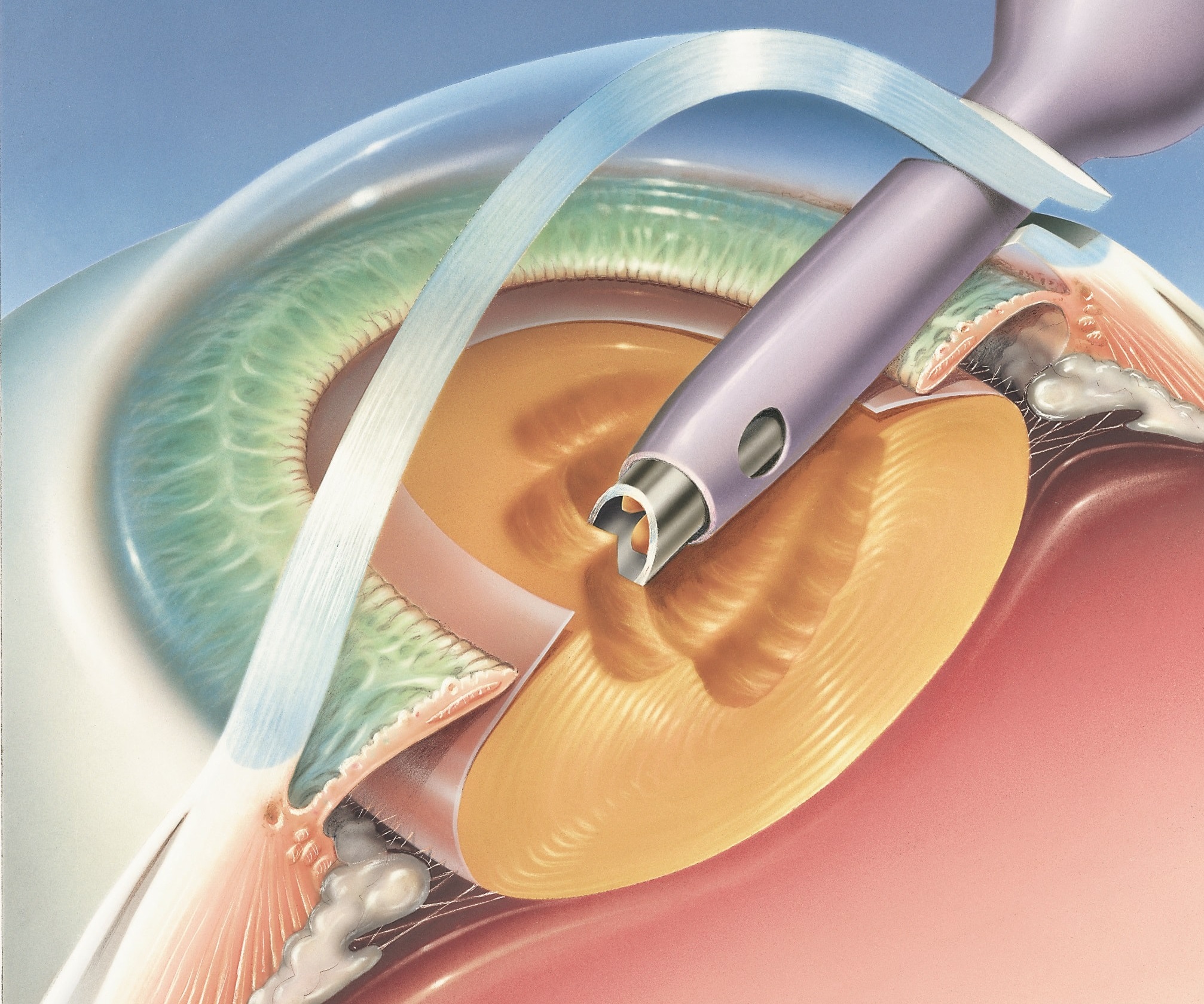For general information about cataract, please click here.
Cataract surgery removes the ‘foggy’ natural lens and replaces it with an artificial ‘intraocular lens’ implant. Generally speaking, cataract surgery is recommended when one’s symptoms from cataracts are significant enough to bother or affect day to day visual needs (e.g. driving, reading, seeing TV subtitles). Modern cataract surgery is highly successful in restoring quality of vision in most people.
WHAT HAPPENS DURING THE CATARACT SURGERY?
Cataract surgery is generally done as a day-surgery procedure under local anaesthesia. Sedation is frequently given by our anaesthetists to help patients relax. The surgery itself is painless and it is rare to feel any significant discomfort during the operation. A full general anaesthetic can be given but is rarely required.
The cataract is removed via tiny micro-incisions with precision instruments to break up the cataract lens within the eye before it is removed. An artificial intraocular lens is then inserted to replace the original lens. The wounds are self-sealing and rarely need to be sutured.
Figure 1

This picture demonstrates removal of the cataract by breaking it up into smaller pieces and aspirating it out of the eye.
Figure 2

This picture shows final position of the implanted artificial lens which replaces the cataract lens in its original position.
INTRAOCULAR LENS CHOICE?
Intraocular lens technology has advanced significantly over the years. We are now able to use various types and strengths of lenses to correct different types of refractive error and reduce the need for glasses after cataract surgery.
Generally speaking, intraocular lenses can be categorised into:
- Monofocal lens: (which includes the toric lens that corrects for astigmatism) These lenses give one focal point offering EITHER distance OR near reading vision.
- Multifocal lens: These lenses give more than one focal point and can allow for both distance AND near reading vision. However, the quality of vision offered by these lenses may not be as good, since they work by ‘splitting’ the incoming light into multiple focal points (foci). This can result in more night vision problems from glare and haloes when compared with monofocal lenses.
Another way of reducing spectacle dependence after cataract surgery is to insert a lens aimed for distance vision in one eye and the other more for nearer vision. This technique is called monovision. Our doctors will advise which options are likely to best suit your needs, bearing in mind the benefits and limitations of the various options.
In order to determine the strength or the ‘power’ of the lens required for your eyes, various biometric parameters of your eyes will need to be measured. These are then applied into a number of formulas to predict the required lens power. This process is called ‘biometry’.
WHAT ARE THE RISKS/SIDE EFFECTS OF CATARACT SURGERY?
Unfortunately, no surgery is free from potential side-effects or complications. Cataract surgery is generally very safe. However, risks may include (but are not limited to) the following:
Common minor side effects which are usually transient and stop causing concern with time;
- Dry, red irritable eye – gritty, scratchy sensation and feeling of ‘grain of sand’ in the eye
- Watering
- Floaters
- Glare, haloes, starburst around lights
- Droopy / puffy eyelids
- Refractive error
Uncommon but more serious complications
- Severe infection causing permanent sight loss (<1 in 1000 cases)
- Decompensation of the Cornea requiring corneal graft (<1 in 1000 cases)
- Capsular rupture requiring second procedure to completely remove the cataract or insert intraocular lens implant (~ 1 in 1000 cases)
- Inflammation and swelling of the retina (cystoid macular oedema) requiring extended anti-inflammatory drops treatment or even an injection (<1 in 200 cases)
As mentioned above, severe complications causing permanent vision loss from cataract surgery are very rare. An overwhelming majority of patients undergo routine surgery with only minor transient side effects (if any). If you would like a more comprehensive list to consider, our doctors can discuss this with you in greater detail.
WHERE IS THE SURGERY PERFORMED?
Our practice can cater for both private and public patients.
- Private Patients at Perth Eye Hospital, West Perth
- Public Patients at Osborne Park Hospital.
